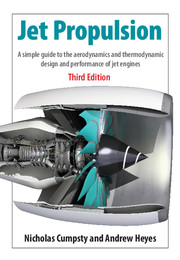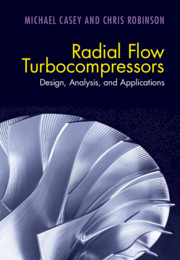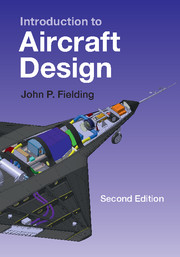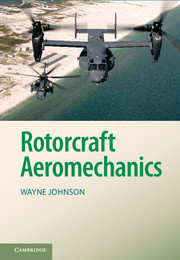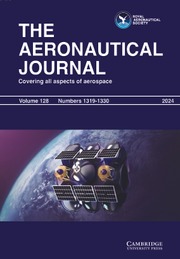Jet Propulsion
This book is a self-contained introduction to the aerodynamic and thermodynamic design of modern civil and military jet engine design. Through two engine design projects for a large passenger and a new fighter aircraft, the text explains modern engine design. Individual sections cover aircraft requirements, aerodynamics, principles of gas turbines and jet engines, elementary compressible fluid mechanics, bypass ratio selection, scaling and dimensional analysis, turbine and compressor design and characteristics, design optimization, and off-design performance.
The civil aircraft, which was the core of the Part 1 of earlier editions, has now been in service for several years as the Airbus A380. Attention in the aircraft industry has now shifted to two-engine aircraft with a greater emphasis on reduction of fuel burn, so the model created for Part 1 is the new efficient aircraft, a twin aimed at high efficiency.
- The emphasis is on simple, realistic, design examples of real jet engines, especially engines under development at present - these real examples of current applications of technology give readers additional insight
- Addresses the modern aircraft industry shift to two-engine aircraft with a greater emphasis on reduction of fuel burn; the model created for Part I is the new efficient aircraft, a twin aimed at high efficiency
- Contains a substantial number of exercises, which follow, as far as possible, logical steps in the design of the civil engine and the military combat engine
- Coverage in the third edition switches to using fan pressure ratio as the independent design variable rather than bypass ratio, thus making use of modern state-of-the-art design strategies and giving a much clearer insight into controlling effects
Reviews & endorsements
"This book provides an excellent overview of the thermodynamic analysis and performance of turbojet based engines for the aircraft industry. … The book includes an excellent set of example questions for each section which are given a relevant contemporary context. … This is an excellent resource for anyone wishing to use this as a textbook as part of an undergraduate aerospace engineering programme. The authors have used their extensive industrial links to develop a textbook that is not only useful to undergraduate students on any programme covering aero gas turbine engines but would find a suitable place on the desk of professionals working in the industry."
K. L. Smith, The Aeronautical Journal
Product details
July 2015Paperback
9781107511224
365 pages
255 × 177 × 20 mm
0.71kg
124 b/w illus. 29 tables 141 exercises
Available
Table of Contents
- Part I. Design of Engines for a New 600-Seat Aircraft:
- 1. The new large aircraft – requirements and background
- 2. The aerodynamics of the aircraft
- 3. The creation of thrust in a jet engine
- 4. The gas turbine cycle
- 5. The principle and layout of jet engines
- 6. Elementary fluid mechanics of compressible gases
- 7. Selection of bypass ratio
- 8. Dynamic scaling and dimensional analysis
- 9. Turbomachinery: compressors and turbines
- 10. Overview of the civil engine design
- Part II. Engine Component Characteristics and Engine Matching:
- 11. Component characteristics
- 12. Engine matching off-design
- Part III. The Design of the Engines for a New Fighter Aircraft:
- 13. A new fighter aircraft
- 14. Lift, drag and the effects of manoeuvring
- 15. Engines for combat aircraft
- 16. Design point for a combat aircraft
- 17. Combat engines off-design
- 18. Turbomachinery for combat aircraft
- Part IV. A Return to the Civil Engine:
- 19. A return to the civil transport engine
- 20. Conclusion.

